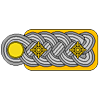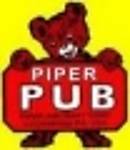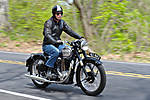It's been just about two weeks since my last update. Work has progress slowly but surely, there just wasn't enough done to post an update with pictures until now. The last update's final picture was the basic Mossie fuselage minus wings, Rudder, Elevators.

The plan was to replace the kit's Rudder, and Elevators with Ultra Detail's resin units as they're slightly more detailed. What I found is that the rudder and elevators were all to short as though they were designed for the old Monogram kit. There just can't be any other explaination. I find it hard to believe that they would have errored on both surfaces.


As you can see in the two above pictures I glued on sheet plastic strips, and then blended them in. Then they were just glued to the fuselage with CCA gel glue.
Finally, the time had come to attach both wings to the fuselage! Even back in 1996 Tamiya engineers realized that the basically butt joint concept wouldn't be strong enough nor reliable enough with the handling needed to continue the build, or even support the weight of the finished model. So they added two spars to each wing and as you can see in the 1st photo there is a bracket that also goes into each wing as well. A plastic pin is inserted into a whole in the wing, which forces the wing into what they felt is proper alignment. There just isn't any adjustment what so ever. Unfortunately, the butt joint is snug in some areas, but not in others, thus requiring some putty work.



Since I didn't want to remove anymore surface detail, I applied a few coats of Vajello White Acrylic putty, waited 30 seconds, then removed and blended it in with a damp Q-tip. A few coats were needed to level out the putty to the wing surface. I'm sure that after a coat of primer, a little more blending will be needed.
As you've already saw in several pictures, I masked the cockpit Greenhouse with Eduard Masks. As usual, the fit is near perfect. In the enlarged pictures you can clearly see that through mostly my placement errors, I have a some trim work to do. And I do have a little putty/blending work as the front of the Greenhouse doesn't touch the fuselage. Nothing major, as you're looking at a picture greater then 1:1, but still work that needs to be done.

I've decided that both wings will have the 100 gal external Gas tanks, and rocket launches with rockets as they were standard equipment by mid-1944, and this build does represent an aircraft from late 1944. The kit tanks are ok, but lack details. I sanded off the crude molding on the front top of the gas cap and neck, and replaced it with two punched out .010 sheet circles of different dia. glued one on top of the other. Also at the back of the tanks are saftey mounting pins that I just made from pcs of brass wire inserted into drilled out holes. Honestly, I'm not to sure how I'm going to go about replicating those safety mounts.

The bottom of the tanks have two drain plugs (well I think that they're both drain plugs), so I also sanded off the crude blob moldings again, and replaced them with smaller sheet punch outs.

Dry fitting the tanks, you can see that there is an uneven gap across the front top of the tank and wing joint. I do have some pictures of these tanks, but I'm not certain that a gap like that is normal. Most likely I'll add just a little putty to shallow up the recess.

So finally the Mossie is really looking like a Mossie, and is getting ready for a coat of primer after some more clean up work, then some rescribing, which I'm really quite poor at. How much depends on how well I progress before I feel I've done all I can do without screwing it up.


And now you're all up to speed on where the Mossie build is.
Joel




































